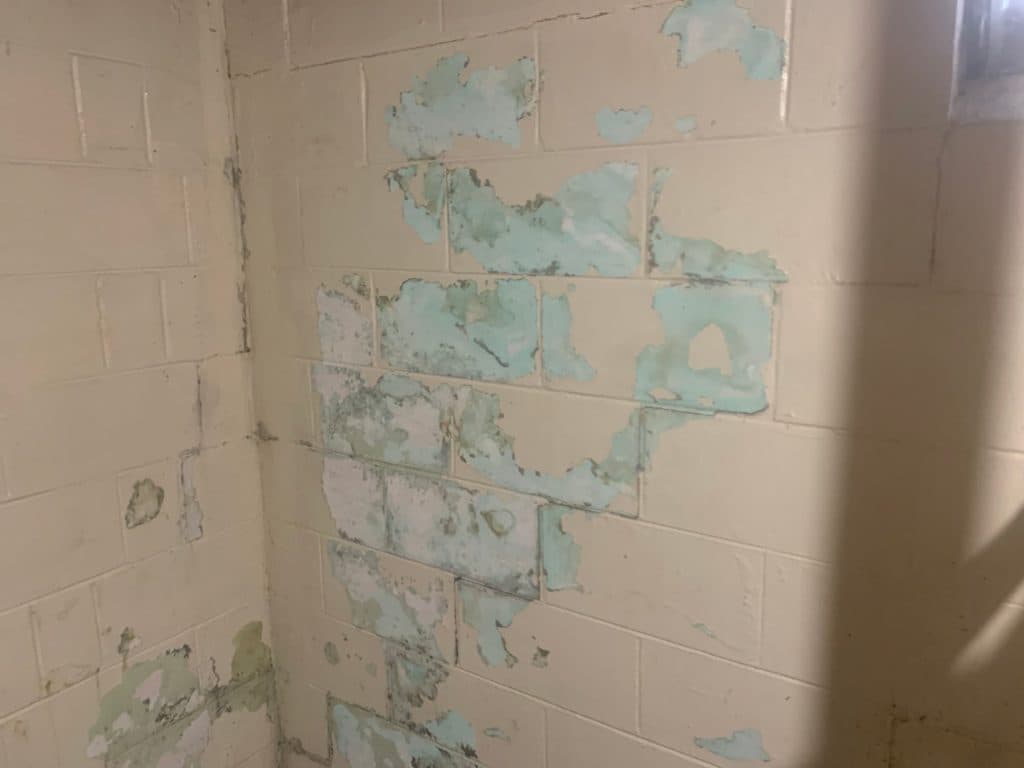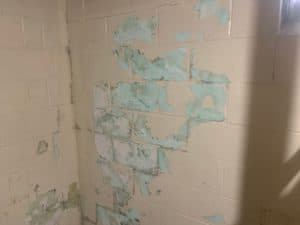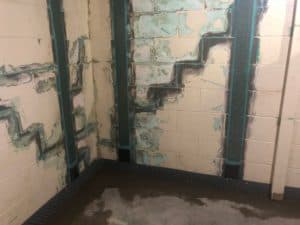
Originally posted 4/9/2018, updated 1/21/2021
It’s estimated that 98% of basements will incur water damage during their life spans. So unless you’re really, really lucky, your basement will flood at some point. This is a messy, frustrating experience for a homeowner, and given the statistic I just quoted, it may seem inevitable. But if you take certain steps, you may be able to avoid this particular problem in the future.
Founded in 1996, Acculevel is a family-owned and operated company that specializes in waterproofing and foundation repair. We have installed basement water drainage systems in thousands of homes in the Midwest, and we want every homeowner to be as informed and prepared as possible for the unpleasant experience of water damage.
We’re going to guide you through the major steps you need to take after a basement flood, then help you determine what repairs you need to make to prevent a repeat of this situation.
 BEFORE: this photo was taken by an Acculevel project manager during a free estimate appointment. There are multiple stair-step cracks forming between the blocks; these are weakening the basement wall and letting water into the home.
BEFORE: this photo was taken by an Acculevel project manager during a free estimate appointment. There are multiple stair-step cracks forming between the blocks; these are weakening the basement wall and letting water into the home.
Before you can start moving towards a resolution, you need to determine the source of the floor water. If it’s a burst pipe, leaking water heater, or sewer line, you’ll need to turn off the water in your home and contact a professional plumber immediately. Once the utilities are fixed, you can move forward with the cleanup. If the flood is the result of a heavy rain, you can proceed as soon as the weather clears up.
 AFTER: this photo was taken by an Acculevel crew member once repairs were completed. The cracks have been epoxy-filled, the walls stabilized with carbon fiber straps, and water drainage has been installed under the floor. (FYI: The wall repairs can be painted over with standard interior paint, to allow them to blend in with the rest of the basement.)
AFTER: this photo was taken by an Acculevel crew member once repairs were completed. The cracks have been epoxy-filled, the walls stabilized with carbon fiber straps, and water drainage has been installed under the floor. (FYI: The wall repairs can be painted over with standard interior paint, to allow them to blend in with the rest of the basement.)
Did you find the source of the water getting into your home? If you have any cracks or gaps in the foundation that allow water, you need to get these fixed promptly. Be aware that the source may not be visible to you; it is entirely possible that your foundation became saturated during the rainstorm and water seeped through it.
Once any damages to your foundation have been repaired, install a water drainage system. This ensures that the next time a heavy rain comes through, any water that tries to enter your basement will instead be routed directly into a drainage track. That water drainage will route the water to a sump pump that will discharge it out and away from your home- keeping your basement clean and dry.
Please use our detailed guide to basement waterproofing. We review all the relevant topics in detail: what causes a basement to leak, interior vs. exterior methods, drainage types, and costs. You can read the guide from start to finish, skip to the chapter that interests you most, or use it to answer specific questions. We wrote it with homeowners in mind, and meant for you to bookmark it and use it as reference.
[DISPLAY_ULTIMATE_SOCIAL_ICONS]